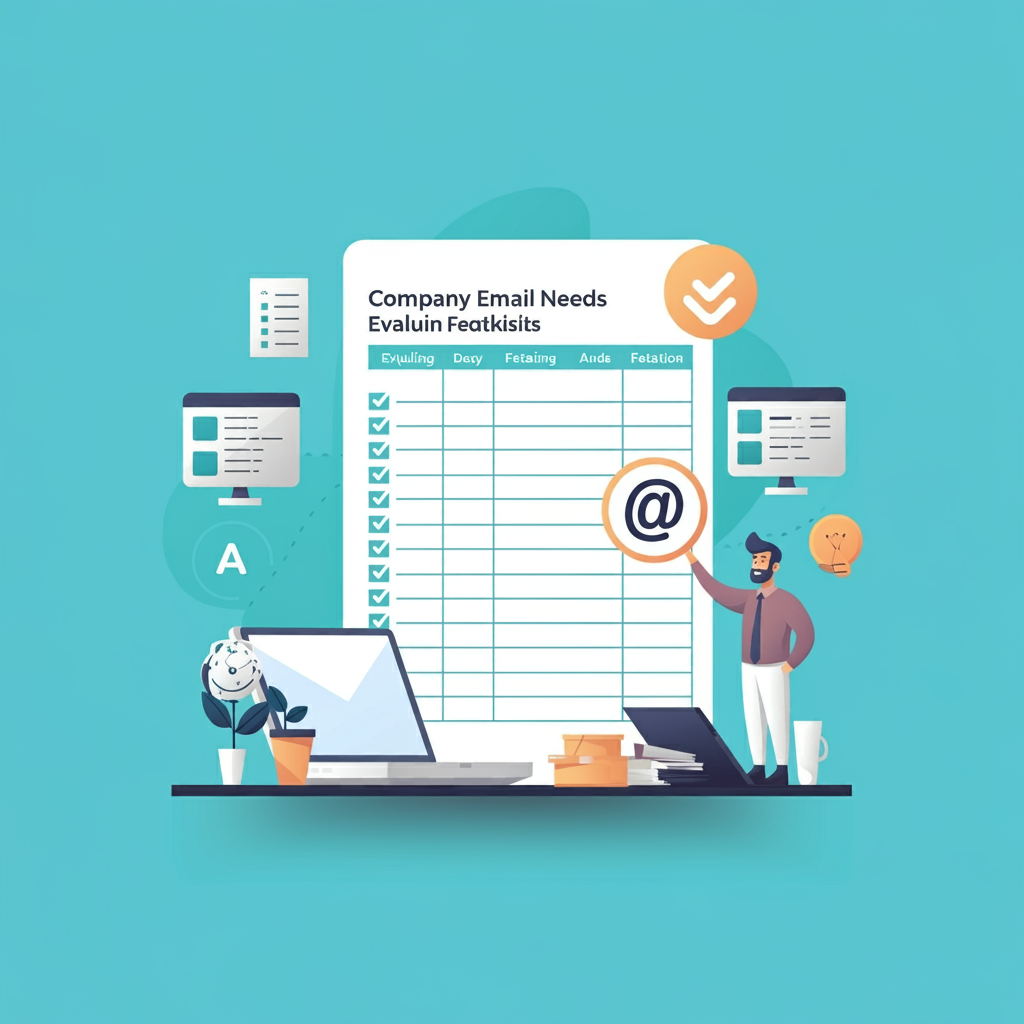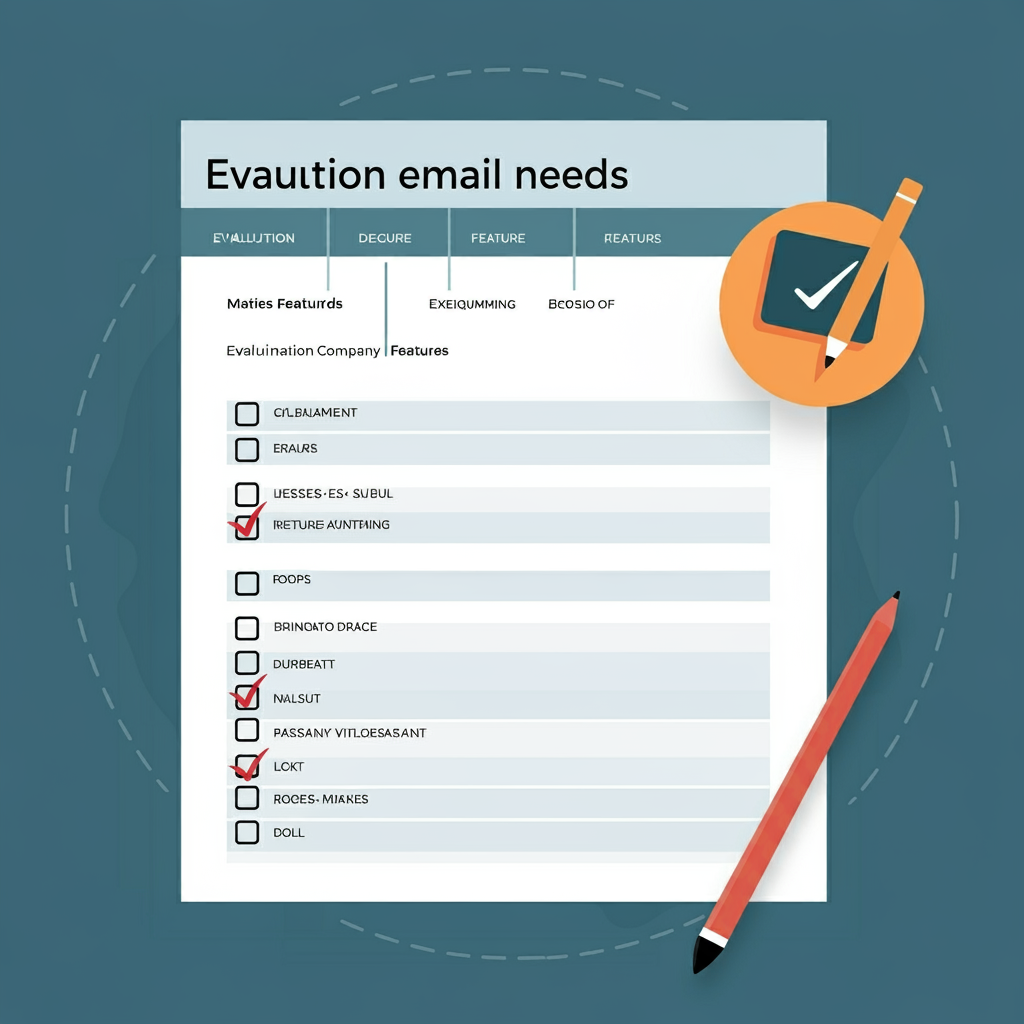Selecting the Best Email Provider for Your Business

Choosing the right email provider is essential for business communication, security, and collaboration. With various options available, it can be challenging to decide which provider suits your company’s needs best. This guide will walk you through the most important factors to consider, from scalability and security to usability and pricing.
1. Evaluate Your Company’s Needs

The first step in selecting an email provider is understanding your company’s specific needs. Whether it’s communication frequency, email storage capacity, or collaboration tools, knowing what your team requires will narrow down your options.
- Identify Key Features: Think about essential features like email forwarding, storage space, and access to shared calendars.
- Consider Company Size: For larger teams, you might need features like group email addresses, distribution lists, and advanced admin controls.
Suggested Image: A checklist template for evaluating company email needs, with columns for each required feature.
2. Prioritize Security and Privacy
Security is crucial for protecting sensitive business information. Many email providers offer built-in security features, but some go the extra mile with end-to-end encryption, multi-factor authentication, and phishing protection.
- End-to-End Encryption: This ensures that only the intended recipient can read the message.
- Data Protection Compliance: Choose a provider that complies with data protection regulations relevant to your region, such as GDPR or HIPAA.
Suggested Image: An icon or diagram representing email security features like encryption, firewalls, and privacy protocols.
3. Consider Ease of Use and Accessibility
An email provider should be user-friendly for both tech-savvy and less-technical employees. Consider providers that offer intuitive interfaces and mobile access, which are particularly useful for remote work.
- Mobile and Desktop Compatibility: Ensure the provider offers both web-based and app versions for flexibility.
- User Interface: A clean, organized interface can improve productivity, making it easier for employees to manage messages and access collaboration tools.
Suggested Image: A screenshot or mock-up of an easy-to-use email interface, showing features like folders and inbox organization.
4. Look into Collaboration and Integration Tools
An ideal email provider supports collaboration by integrating with other tools your team uses daily. This includes calendars, file-sharing apps, and project management software, allowing your team to work more seamlessly.
- Calendar Integration: Shared calendars help with scheduling, especially for remote teams or client meetings.
- Project Management Integrations: If your team uses platforms like Slack, Asana, or Microsoft Teams, check if the email provider integrates smoothly with these tools.
Suggested Image: A graphic showing email integration with a calendar and file-sharing platform, symbolizing improved collaboration.
5. Assess Storage Capacity and Limits
Depending on your business type, you may need substantial storage for managing attachments, files, and email history. Assess the storage capacity of each provider, along with how easy it is to upgrade as your needs grow.
- Attachment Limits: Check the size limits for attachments, especially if you frequently send large files.
- Cloud Storage Options: Some providers offer additional cloud storage for file sharing and backups, which can be helpful if your business relies heavily on document sharing.
Suggested Image: A storage capacity chart comparing popular email providers, illustrating differences in free and paid options.
6. Analyze Scalability for Future Growth
Your email provider should be able to grow with your business. A scalable provider allows you to add new accounts easily or upgrade to a higher plan without losing data or disrupting your team.
- Flexible Plans: Look for providers that offer flexible plans or pricing tiers, so you can increase storage or add new accounts as your company grows.
- Seamless Upgrades: Choose a provider that makes it easy to switch plans, with minimal downtime and no need for data migration.
Suggested Image: A graph or chart representing different email provider plans and scalability options.
7. Compare Pricing and Value
While budget constraints are common, choosing an email provider solely based on price can backfire if it lacks essential features. Evaluate the cost of each provider and balance it with the value it brings to your business.
- Monthly and Annual Plans: Some providers offer discounts for annual subscriptions, which can be a good option if you’re satisfied with the service.
- Additional Costs: Check for any extra fees for storage upgrades, premium features, or support services.
Suggested Image: A pricing comparison table for major email providers, showing features included in each plan.
8. Review Customer Support Options
Reliable customer support is crucial if any issues arise, from email delivery problems to account access issues. Good providers offer 24/7 support via chat, email, or phone, ensuring you get assistance whenever you need it.
- Support Channels: Check the available support options—like live chat, email, or phone support—and read reviews to get an idea of response time and quality.
- Knowledge Base and Tutorials: Providers with an extensive online knowledge base and tutorials can help your team quickly resolve minor issues on their own.
Suggested Image: An illustration showing different customer support options, like a chat icon, phone, and FAQ section.
9. Test the Provider with a Trial or Free Version
Many email providers offer trial periods or free versions, allowing you to test the service before committing. Use the trial period to evaluate how well the provider meets your company’s needs and how comfortable your team feels using it.
- Evaluate Performance: During the trial, test the email speed, user experience, and any integration features.
- Get Team Feedback: Ask your team for their input, as their experience with the platform will help you make an informed decision.
Suggested Image: An example of a free trial signup page, showing the process of getting started.
Conclusion
Choosing the right email provider for your company involves a balance of functionality, security, and scalability. By evaluating your company’s specific needs, prioritizing user-friendliness and security, and testing options through trials, you can find an email provider that not only meets your current needs but also supports your business growth. Take the time to compare and test providers to make a choice that enhances productivity and communication in the long run.
